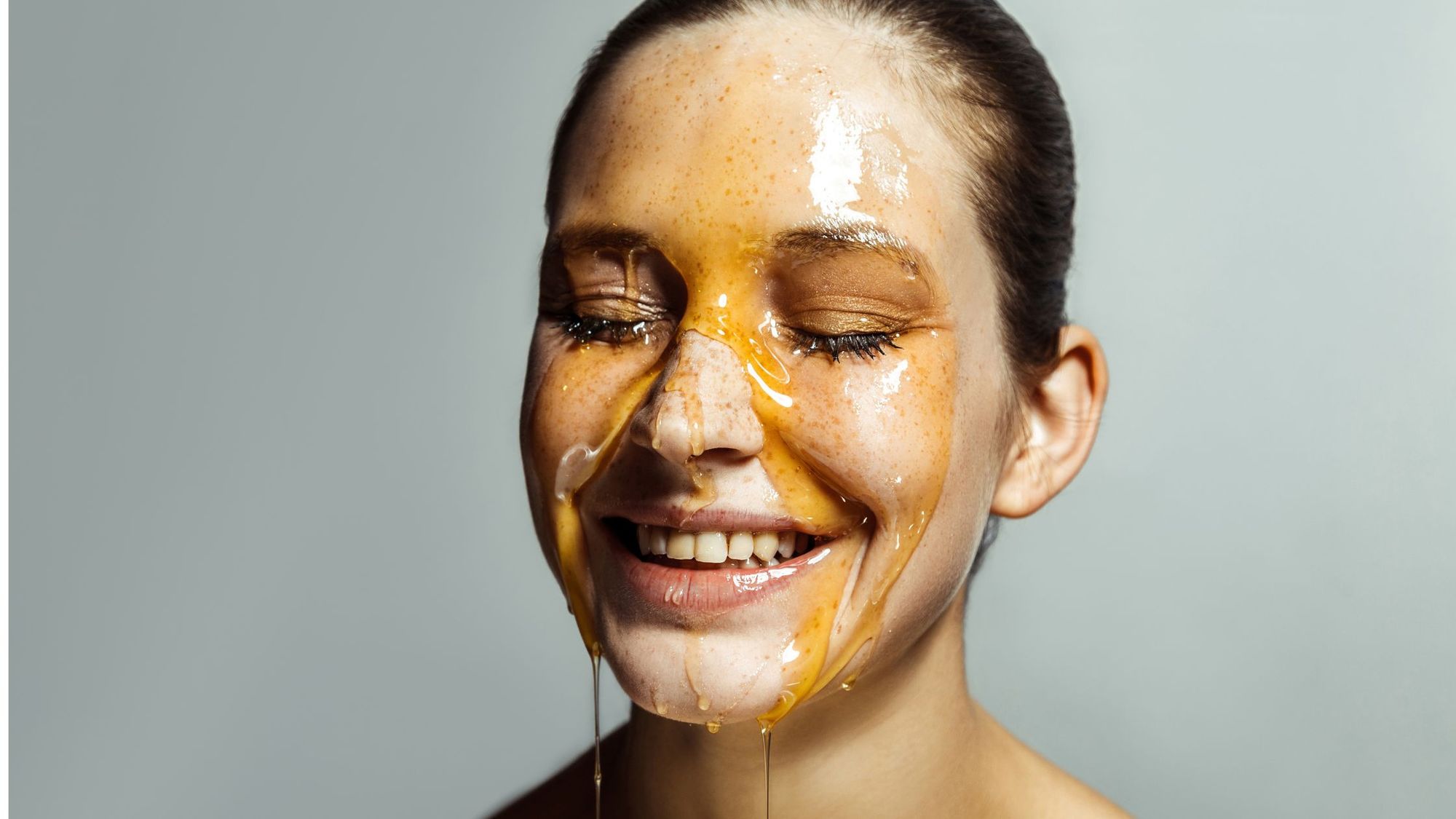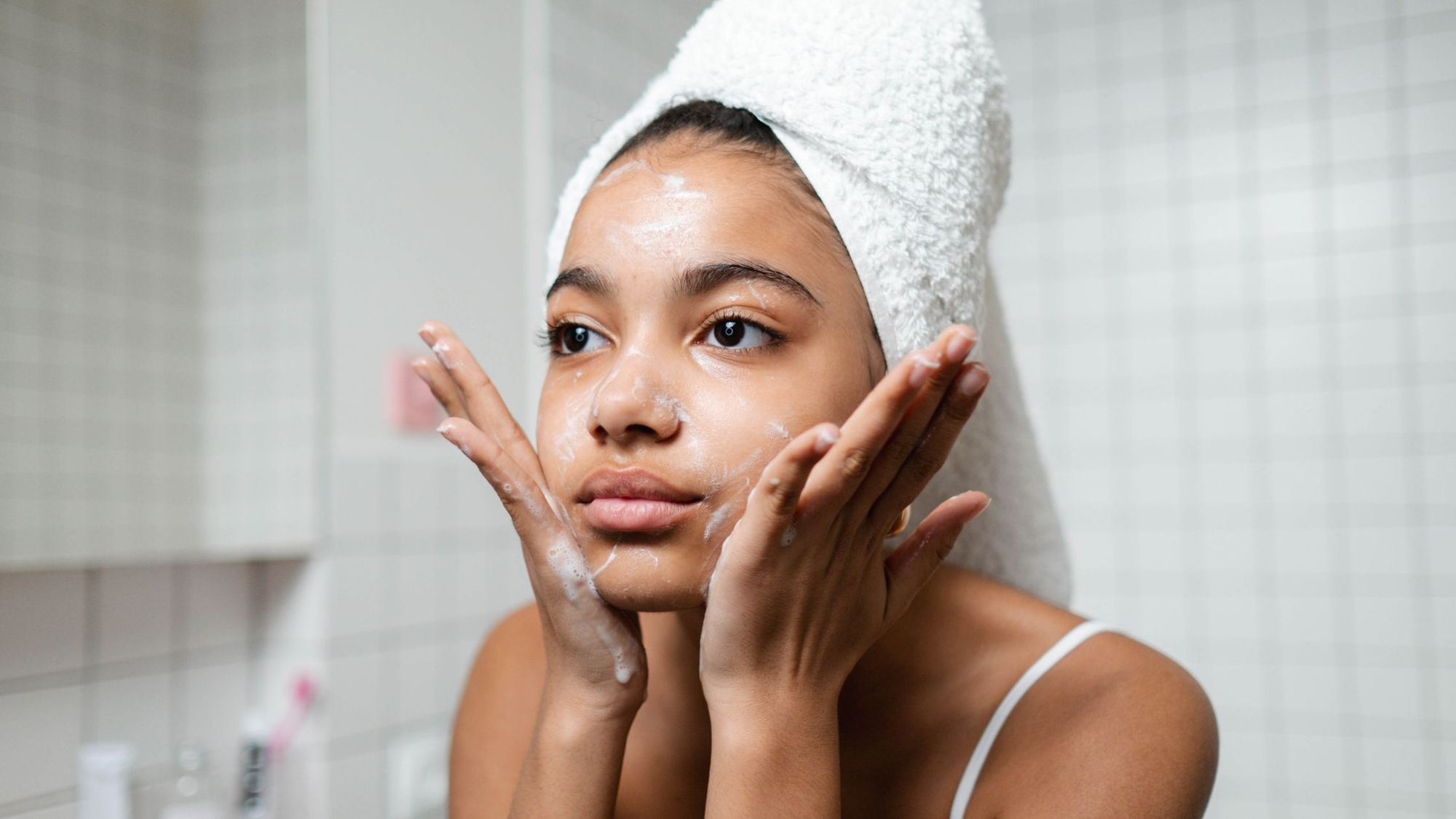
As the weather changes in the colder seasons, now’s a good time to upgrade your beauty routine with some fall skincare tips. Throughout the seasons, your skin is exposed to different atmospheres and environmental conditions which influence everything from skin dryness to oil production. In hot and humid weather during the summer, you need extra SPF and oil control. In the fall, your skin starts crying out for moisture and hydration.
Autumn introduces cooler weather and a drop in humidity, which makes the air dryer, contributing to flaky, irritated skin. Mix this outdoor atmosphere with the hot, dry air we get from cranking the heat within the home, and you can end up with a multitude of skin problems.
Changing your skincare routine in time for fall and winter is an excellent way to ensure you can continue maintaining healthy skin throughout the coldest months of the year.
How Does Fall Weather Affect Your Skin?
Since fall weather differs depending on where you live, the impact of the weather on your skin can vary. In desert climates, fall is basically just a cooler version of summer, so you’ll need to maintain a lot of the same strategies you used during the warmer months. In polar climates, fall is just a little warmer than winter, which means switching your routine up for colder weather.
Regardless of where you live, fall can be an excellent opportunity to assess your skin’s needs, and start updating your routine.
Here are some of the most common skin challenges you’re likely to face during the fall months:
Dehydrated and dry skin caused by cooler temperatures. Lower humidity can also lead to worsened conditions such as eczema.
Exacerbated skin issues prompted by extra rain and wind. You may notice redness, inflammation, and more irritation.
Higher sebum production leading to a greater risk of breakouts and acne.
So, which fall skincare tips should you be looking into?

Top Fall Skincare Tips
The best way to enhance your skincare routine is to know your skin type and skin traits before you start making changes.
Using your CircleDNA test, you can learn more about your genetic skin traits and skin type, and the specific issues you’re likely to face. Once you have a clear understanding of your skin, you can begin using the following tips to protect yourself during fall.
1. Continue to Nourish Your Skin
Just because fresh fruits and veggies aren’t quite as commonly served in the fall doesn’t mean you shouldn’t keep eating them. While it might be tempting to opt for fast food and warm comfort foods during the colder months, it’s important to keep your skin nourished with the right vitamins and minerals from fresh produce. Check out this list of top fall produce to stay healthy this fall.
Fall is a good season for topping up your intake of pumpkin and squash, which are packed with carotenoids, the compounds best known for maintaining the healthy glow of your skin. You can also experiment with a range of nutrient-rich fruits, vegetables, and spices by creating your own warming soups at home. Consider adding a dash of turmeric to boost your immune system.
2. Choose a Hydrating Cleanser
Another one of the best fall skincare tips is to switch to a more hydrating cleanser. Cleansers are important for removing excess dirt from your skin at all times of the year. Light and foamy cleansers might feel excellent during the summer months, but when the humidity in the air diminishes, you need something a little more balanced. Focus on looking for water-based products in the winter and fall, instead of oil-based alternatives.
Not only will this help to hydrate your skin, but it could also assist with balancing excess sebum production, which can lead to breakouts and acne. Cleansers with added vitamin E are particularly useful for creating a skin barrier which retains moisture.
3. Exfoliate Gently
Exfoliation is a wonderful part of a skincare routine for people who often suffer with dull and dry skin. It’s tempting to scrub away the extra dryness during fall when you want to brighten your complexion, however, this can just make the problem worse and irritate your skin.
Try a gentler exfoliating scrub (often referred to as a skin ‘polish’) such as the Zo Skin Health Exfoliating Polish. If you feel your skin really needs an extra scrub, use a gentle toner a couple of times a week, and make sure you follow each washing routine with an extra layer of moisturizer. Stay away from retinoids during this time, too, as they can dry your skin even more.
4. Add Vitamin C and Hyaluronic Acid
Hyaluronic acid is a fantastic humectant capable of drawing moisture into the skin. A dose of this in your morning routine will help to keep your skin protected from dryness throughout the day. You can also strengthen the impact of your hydrating serums by adding vitamin C into the mix. Vitamin C provides your skin with antioxidants to protect against free radicals, while evening skin tone and fading marks.
During the colder months, vitamin C can even help to combat the SPF rays that might not be blocked by a lighter sunscreen. It also helps to boost collagen production, so you can benefit from a brighter and more youthful complexion.
5. Choose a Thicker Moisturizer
Even if you don’t moisturize most days, it’s worth adding this strategy to your routine during the autumn months. All of the best fall skincare tips involve increasing your skin’s natural moisture. Compensate for the change in the air temperature and humidity by thickening your moisturizer, and choosing something with a rich selection of beneficial ingredients.
A thicker moisturizer will not only replenish dry skin after each day of battling the fall cold, but it should also provide a barrier against wind and light sprinkles of rain too. This can help to keep skin issues such as eczema to a minimum.
6. Don’t Skip SPF
One of the most important fall skincare tips is to remember that you need to wear SPF all year long. Since the sun isn’t quite as bright during the autumn months, some people assume they can stop wearing SPF entirely. However, UV radiation is still present during the colder months of the year, too. Sunscreen should generally be a part of your skincare routine throughout the entire year, to help protect against issues such as premature aging and cancer.
Ideally, you’ll want at least an SPF of 30 for the fall months. It may be possible to find a moisturizer with added SPF included, so you can avoid layering too much. However, if you’re adding your SPF alongside a moisturizer, put it on first.
7. Shorten Your Showers
Although a long, hot shower might sound like the perfect treat after a cold day, the heat can cause a number of issues for your skin. Although you don’t necessarily need to switch to cold showers, you should think about limiting your exposure to hot water whenever possible. Try not to scrub your skin too harshly when you’re in the tub too, as this can worsen skin conditions.
After each shower or bath, make sure you smother your skin from head to toe with moisturizer. This means investing in a high-quality body lotion. Using a thicker moisturizer or oil-based product will prevent the water you’ve soaked into your pores from evaporating too quickly.
8. Hydrate From the Inside Out
While slathering your skin in moisturizing ointments and creams is great for keeping it protected during the fall, it’s important to stay hydrated inside too. Stick to a consistent routine of drinking plenty of water each day. This will help to battle the impending arrival of breakouts and dry skin when you’re exposed to less humidity each day.
Aside from keeping a bottle of water handy at all times, you could also consider adding more hydrating fruits and vegetables to your routine. Try eating extra squash, pumpkin, and any fruits you can get your hands on during fall. It’s also worth avoiding too many sweet treats, as these can exacerbate your skin conditions even further.
9. Buy a Humidifier
In the fall, you’re likely to look forward to coming home to a warm house and a cozy blanket. However, your heating system has a unique ability to suck a lot of excess moisture from the air, leaving the atmosphere and your skin drier than ever. A good way to minimize the issue is to purchase a humidifier specifically for colder and drier months.
Every time you turn on your heating, use your humidifier too. This can be particularly beneficial when you’re sleeping, as it will help to replenish the water in your skin you’re losing when you’re not awake and drinking H2O.
10. Remember the Little Details
Often, when updating a skin routine for fall, many people focus on the core parts of their body, such as their stomach, arms, face, and legs. However, it’s important to remember the little details too. Your feet and elbows could become dryer during the autumn months, so it’s worth giving them some extra care and attention with your body lotion.
When treating your face, pay close attention to your lips and eyes. Your lips are one of the most delicate parts of your body, and can easily get chapped during fall. Invest in a good lip balm to protect them from the weather. An extra eye cream can also be particularly useful for defending the extra sensitive skin around your eyes, and banishing wrinkles.
Update your Skincare Routine for Fall
Hopefully, the above fall skincare tips will give you the guidance you need to continue having healthy and beautiful skin throughout the cooler months. Remember, it’s always worth taking some time to get to know your skin traits better, before you start making changes to your skincare routine. We’re all different, and your needs may vary depending on whether you’re prone to dry or oily skin.
Pay close attention to how your skin reacts during the colder months, and adapt your skincare routine based on what you discover. You can get one step ahead by ordering your CircleDNA test today, to find out more about your skin type.
References:
- Science Direct: Carotenoid and melanin pigment coloration affect perceived human health
https://www.sciencedirect.com/science/article/abs/pii/S1090513810001169?via%3Dihub

This Post Has One Comment
Comments are closed.